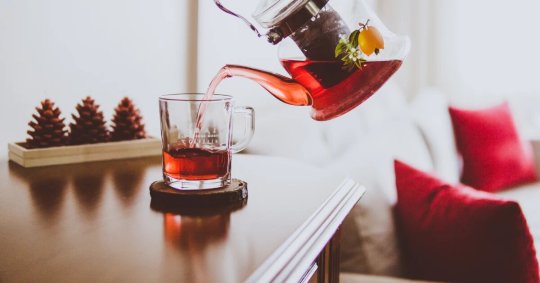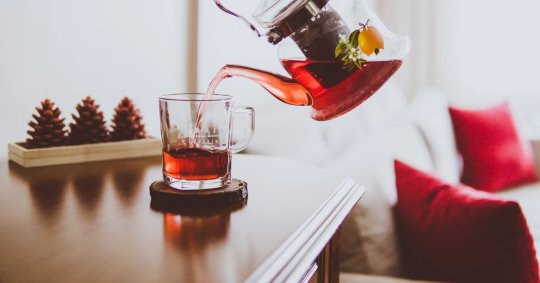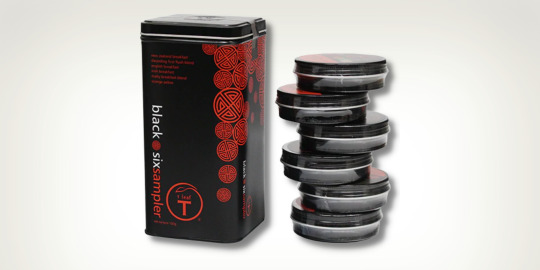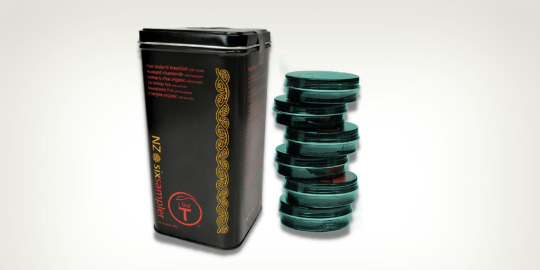Don't wanna be here? Send us removal request.
Text
Tea Rituals Around the World: Unveiling Cultural Traditions

Tea rituals worldwide are a fascinating way to learn about different cultures. In China, tea is seen as a symbol of hospitality and respect. In Japan, the tea ceremony is a formal tea ritual to promote peace and harmony.
In England, afternoon tea is a social event enjoyed by people of all ages. And in Morocco, mint tea is a refreshing drink served to guests as a sign of welcome.
No matter where you belong, tea is a beverage that people of all cultures enjoy. The different ways tea is prepared and served reflect each country's unique customs and traditions.
The History of Tea Ceremonies-
Tea ceremonies have a long and rich history, dating back to the 9th century in Japan. Zen monks originally developed the ceremony to promote mindfulness and spiritual enlightenment. Over time, the tea ceremony evolved into a more elaborate social event, and it became a popular way for the upper class to show off their wealth and sophistication. Tea ceremonies are still practised in Japan and are seen as a way to promote peace, harmony, and simplicity.
815: The first recorded tea ceremony is held in Japan.
12th century: Zen monk Eisai introduces powdered green tea to Japan.
15th century: The tea ceremony becomes popular among the upper class in Japan.
16th century: Sen no Rikyu, the "Father of the Tea Ceremony," develops a new style of tea ceremony that emphasises simplicity and elegance.
Today: Tea ceremonies are still practised in Japan and other parts of the world.
Tea Around the World-
There are many different tea ceremonies worldwide, each with unique traditions and customs. Here are a few examples:
1. Japan
The Way of Tea (Chado), the tea ceremony in Japan, known as "Chado" or "The Way of Tea," is a highly revered art form. Rooted in Zen Buddhism, the ceremony emphasises harmony, respect, purity, and tranquillity. Led by a tea master, the tea ritual involves precise movements and gestures. The host carefully prepares matcha, a powdered green tea, in a traditional tea room. The tea is whisked specifically and served to guests in a serene and meditative atmosphere. Chado reflects the Japanese philosophy of finding beauty and tranquillity in simplicity.
2.China
Gongfu Cha China has a long-standing tea culture, and one of its most significant tea rituals is Gongfu Cha. Gongfu, meaning "skillful" or "with great effort," refers to the particular and precise way of brewing tea. The use of small clay teapots and multiple short steepings characterises this ceremony. The tea is brewed and poured with grace and skill, paying attention to every detail, such as water temperature, tea leaves' quality, and the rhythm of pouring.
3. United Kingdom
Afternoon Tea The British tradition of afternoon tea has become an iconic cultural practice. Introduced in the 19th century, afternoon tea is a formal affair typically served between lunch and dinner. It consists of a black tea pot, a selection of finger sandwiches, scones with clotted cream and jam, and an array of pastries and cakes. The tea is usually served in delicate china teacups, with milk and sugar offered as condiments. Afternoon tea represents elegance, refinement, and the art of conversation, providing a time for relaxation and indulgence.
4. Argentina
Mate Sharing In Argentina, the tea ritual revolves around the sharing of mate, a traditional South American beverage which is made from the leaves of the yerba mate plant. Mate is served in a hollowed-out gourd, known as a "mate," and consumed through a metal straw called a "bombilla." The host prepares the mate by filling the gourd with yerba mate leaves and adding hot water. The drink is then passed around in a circle, with each person taking turns drinking from the same gourd and straw. Mate sharing symbolises friendship, trust, and community bonding.
5. India
Chai and Masala Chai In India, tea is significant in everyday life and consumed in various forms. The chai or tea ritual involves brewing a strong and aromatic blend of tea leaves, milk, water, and spices such as cardamom, cinnamon, ginger, and cloves. The ingredients are simmered together, creating a flavorful and comforting beverage. Chai is often served in small clay cups or glass tumblers and enjoyed with snacks or biscuits. The chai or tea ritual in India reflects warmth, hospitality, and a love for rich flavours.
6. Tea rituals
Worldwide offer a fascinating glimpse into the diverse cultures and traditions developed over the centuries. Whether it's the serene and meditativeJapanese tea ceremony or the social sharing of mates in Argentina, these tea rituals provide a unique way to connect with others, promote mindfulness, and celebrate the art of tea.
By partaking in these tea rituals, we can deepen our appreciation for different cultures and better understand the world around us. So, the next time you save our a cup of tea, take a moment to reflect on the cultural heritage and traditions that it represents.
Source- Discover the rich tapestry of tea rituals across the globe, delving into diverse cultural traditions and the art of tea preparation.
0 notes
Text
0 notes
Text
0 notes
Text
Herbal Solutions: Contact Flowering Herb
I'm a huge advocate for drinking tea. It is an incredibly humble beverage that packs well above its weight. With so many flavours to choose from, there is bound to be something to suit everyone's palate. Depending on the variety you drink, there are a multitude of potential health benefits too - everything from reducing inflammation to relieving anxiety, improving skin health and so much more.
With so much to love about tea, we felt the only thing that was lacking was a one stop shop, where you can find all New Zealand's best loved brands in one convenient location. So with the help of my team here at The Flowering Herb we've done exactly that. We hope you enjoy trying out all the different flavours as much as we have.
Should you have any questions, please get in touch.
Sincerely
Barb Hutchinson Managing Director The Flowering Herb
Source-
Contact Flowering Herb for all your herbal needs. We offer a wide range of natural remedies and products. Reach out to us today!
#herbalremedies#naturalproducts#wellness#holistichealth#herbalsolutions#herbalhealing#plantbasedmedicine#floweringherb
0 notes
Text
#TeaLovers#HerbalTea#FlavorfulBlends#TeaCollection#SipandRelax#TeaTime#ExploreFlavors#FloweringHerbTeas#DeliciousBrews
0 notes
Text

Flowering Herb is a website dedicated to providing information and resources about various types of herbs, their cultivation, and their medicinal uses.
0 notes
Text
Flowering Herb: Your Source for Herbal Knowledge

Flowering Herb is a website dedicated to providing information and resources about various types of herbs, their cultivation, and their medicinal uses.
0 notes
Text
0 notes
Text

Discover the benefits of organic tea over conventional teas. Explore the blog to learn why organic is a healthier and sustainable choice.
#organictea#conventionalteas#healthylifestyle#sustainablechoices#naturalingredients#teaenthusiast#healthbenefits#ecofriendly#wellness#drinkorganic
0 notes
Text
#organictea#conventionalteas#healthylifestyle#sustainablechoices#naturalingredients#teaenthusiast#healthbenefits#ecofriendly#wellness#drinkorganic
0 notes
Text
Top 7 Reasons to Choose Organic Tea Over Conventional Teas

What is better than coming home from a long day to a steaming brew; or starting your day with your favourite cup of tea? Tea is a trustworthy companion whether you want to wind down, relax and destress after a tough day, or get energised for the day ahead.
Of course, we love tea, and so do millions of others worldwide! and it's no wonder. Tea, as well as being enjoyable, is said to be very good for our health and wellbeing. There are tea varieties that have the potential to assist us to reduce inflammation, boost our immune systems, encourage weight loss, lower cholesterol and even improve our mental alertness.
Tea comes in many different varieties, and tea is a tasty substitute for those of us who don’t want to drink fattening or sugary drinks, are looking for a healthier substitute for coffee or simply don't want to drink plain old boring water all of the time.
If you want to get the most benefits out of every cup of tea you drink, we recommend purchasing our range of certified organic teas. Often, they aren't any more expensive than our regular teas, but the benefits of going organic can be substantial not only for us, but also for the world we live in. Here are some reasons we recommend going organic:
7 Reasons To Choose Organic Tea For Healthier Living
1. Organic Teas are gentler and kinder to the environment (and therefore more sustainable)

One of the main differences between organic vs. conventional teas is the method used for farming the tea. The cultivation of organic tea avoids the use of chemically based fungicides, herbicides, pesticides, and fertilisers. Instead, organic tea farmers look back to nature and use environmentally friendly biological processes to develop and maintain their tea crops. This means organic methods of farming tea are both gentler and kinder to the environment than conventionally farmed teas.
2. Organic Teas are gentler and kinder to people (and therefore more socially responsible)

If social responsibility is your thing, you'll definitely want to opt for our organic teas. As well as being kinder and gentler to the environment, organic farming methods are safer for the people who are on the farms looking after the herbs, spices and tea trees that go into our teas.
3. Organic Teas Taste Better-

Taste plays a vital role in deciding which type of tea to choose and because organic tea farming only uses natural methods to manage pests and to fertilise the crops you will only experience delicious natural flavours when you opt for organic teas.
So, if you have a refined palate you'll definitely want to opt for the organic version of the tea.
4. Organic tea enhances the benefits of the tea-

Teas produced organically aren't exposed to chemicals in any part of the processing journey chemicals aren't able to enter into the leaf structure. This means the tea leaf is able to maintain its integrity and offer us the best quality experience and well as provide the highest nutritional value. If you are looking for bang for buck, purchasing organic teais the way to go.
5. No GMOs - Guaranteed-

Certified Organic teas contain no GMOs.
6. Organic Tea Helps Reduce Pollution-

Certified organic standards do not permit the use of toxic chemicals in farming. These standards also require the responsible management of healthy soil and biodiversity. This means toxins won't be escaping into water systems, nor will they be entering our food chains as a result of the tea you drink.
7. Organic teas help to reduce the impacts of climate change-

By choosing organic teas, you are supporting farmers whose methods actively improve soil health. Healthy soil is important in combating climate change as it acts to pull carbon out of the atmosphere rather than releasing it into the atmosphere. Climate change is occurring because there is too much carbon in our atmosphere.
Closing comments
We know there are a lot of factors that influence which tea to buy. We hope that you'll take our above information into consideration when you make your next tea purchase. Here at The Flowering Herb we try to make all our tea purchases organic, and we hope we can encourage more people to do the same.
Source- Discover the benefits of organic tea over conventional teas. Explore the blog to learn why organic is a healthier and sustainable choice
#organictea#conventionalteas#healthylifestyle#sustainablechoices#naturalingredients#teaenthusiast#healthbenefits#ecofriendly#wellness#drinkorganic
0 notes
Text
First aid for sports

Don't get caught off-side, or off guard.
Sport is great. It is social, helps to maintain a healthy weight, is a great stress release, and can provide a genuine sense of accomplishment. There’s nothing more exhilarating than winning a big game against your fiercest rivals no matter what sport that is in and sometimes you have to put your body on the line to secure the win.
Let’s face it, part of playing sports is getting the odd bump or lump, scratch or bruise, particularly when you play the contact ones. When that happens, you might find you need to give yourself a little TLC in the form of some first aid care.
So isn’t it better to be prepared so you can get back out there again as soon as possible! We know the sooner you look after yourself, the sooner you can get back to the game you love. After all, you’re there to play, not watch from the side-lines! And that’s why it’s so important to be prepared with your first aid for sports kit.

How do you know what to include in your First Aid For Sports Kit?
Before we make any recommendations about what to include in a first aid kit, we always as a few questions:
What are the common injuries sustained with the sports you’re participating in? For example, rugby is a collision sport, so injuries such as cuts and strained tendons can occur. This means you’ll want to include plasters, cohesive bandages and ice-packs in your first aid kit. Motorsport on the other hand, can cause burns and bruises, in which case a specialised motorsport kit is ideal.
Will your first aid kit for sports be servicing an individual, a team, or an entire club. If you’re providing first aid for an individual a one person first aid kitwill often be sufficient, but for an entire club you’ll want something a lot more comprehensive.
What first aid equipment can be used to help mitigate the chances of an injury occurring in the first place? Proper warm-ups and stretching are a given, however strapping using porus paper tape or cohesive bandages can also be a great way to stabilise joints and restrict joint movement. As an added bonus cohesive bandages and strapping tape can also be used to keep your socks up too!
We also recommend asking these questions to ensure you are well prepared before you need to be:
Who are the trained first aiders at the club you’ll be playing at? Regardless of how large or small the club is, they should have at least one trained first aider close by. You need to know this so you know who to approach in the event of an emergency at the club.
How isolated the area you’ll be playing in? It’s a good idea to download an Accident and Emergency app prior to the game so you know where to get help if you need it such as .
Here are some of the items we recommend you consider including in your first aid for sports kit (generally not part of a generic first aid kit):
Ice packs and heat wraps – Ice Packs are ideal for the first 24-48 hours after a bruising injury, while heat wraps are great for sprains and strains and for bruises older than 48 hours
Cohesive bandages – we find these are super versatile and can even be used to keep your socks up!
Strapping tape – useful for when you need to stabilise certain areas of the body
Splints – to keep an injured body part still until medical help can arrive
Antiseptic cream – keep the nasties out, especially if the injury site is likely to be exposed to dirt or other pathogens
Plasters – in our experience you can never have too many plasters when it comes to sportsso while most generic first aid kits include some plasters, they are usually limited to the standard fabric plasters.
Have fun out there and remember... be prepared
Source- Learn essential first aid techniques and protocols for sports injuries, ensuring quick and effective care on the field.
#SportsFirstAid#SportsSafety#InjuryCare#SportsEmergency#FirstAidTips#AthleteHealth#SportsInjuryPrevention
0 notes
Text
Learn essential first aid techniques and protocols for sports injuries, ensuring quick and effective care on the field.
#SportsFirstAid#SportsSafety#InjuryCare#SportsEmergency#FirstAidTips#AthleteHealth#SportsInjuryPrevention
0 notes
Text
6 Benefits of Rooibos Tea For Better Skin Health

Do you drink rooibos tea daily? If you do, the good news is that you could be soaking up lots of good benefits for your skin. Having a drink of organic rooibos tea, like green and black tea, is a great way to enjoy a tasty beverage that can be beneficial to our health in many ways.
Each cup of rooibos tea has just 2 to 4 calories, so you may indulge in this deliciously fragrant beverage without feeling guilty. Keep in mind that adding sugar, honey, or other sweeteners can add calories to your diet, so keep them to a minimum if you want to maintain your skin's health.
The following are some of the benefits of Rooibos tea for better skin health:
1. Rooibos Tea Benefits for Skin: Can Reduce the Appearance of Wrinkles
Rooibos tea is rich in antioxidants. Antioxidants are important to skin health because they are said to help the skin to repair itself and correct visible damage. This means they are likely to aid in the prevention of premature skin deterioration.
2. Rooibos Tea Benefits for Skin: Improved Skin Appearance
Alpha hydroxy acid, found in Rooibos tea, is one of the major elements in skin treatments like chemical peels, which are common procedures at dermatologist clinics. As a result, the alpha hydroxy acid found in rooibos tea could be helping you with your skincare regimen and helping to improve the appearance of skin. In 28-day clinical research, a rooibos tea mixture showed a nearly 10% reduction in the appearance of fine lines and wrinkles. The calming impact of Rooibos tea is said to reduce inflammation and redness, resulting in more even-toned skin.
Common skin disorders, including eczema and acne, have been demonstrated to be helped by zinc, which is also found in Rooibos tea.
3. Rooibos Tea Benefits for Skin: May reduce skin conditions
Antioxidants abound in Rooibos, making Rooibos tea beneficial to one's health and well-being. Quercetin, an anti-inflammatory chemical, is just one of of the antioxidants found in Rooibos tea. Because of the presence of Quercetin in Rooibos tea there are some suggestions that if you have eczema, psoriasis, dermatitis, or acne, Rooibos tea might help to alleviate these conditions.
4. Rooibos Tea Benefits for Skin: Reverse the effects of sunburn
At least one study by Dr Tandeka Magcwebeba of Stellenbosch University suggests Rooibos tea also helps to prevent skin cancer. According to her recent study, the concentration of polyphenol antioxidants present in Rooibos could offer protection against the early stages of skin cancer development when applied via a lukewarm bath.
5. Rooibos Tea Benefits for Skin: Improved Skin Health
Rooibos tea, like many genuine teas and herbal tisanes, includes minerals like calcium, manganese, and fluoride, which aid in the formation of healthy skin. These minerals stimulate the activity of osteoblast cells, which are important enhanced skin health.
6. Rooibos Tea Benefits for Skin: It May Aid in the Control or Prevention of Diabetes, leading to better skin health
Drinking organic rooibos tea may help to keep diabetes under control or prevent Type 2 diabetes from developing. In a 2013 study, polyphenols in rooibos tea were shown to control blood sugar levels and improve glucose tolerance in diabetic mice. Diabetes can cause dry skin, so when diabetes is controlled it is likely the appearance of dry skin will improve.
Conclusion
Rooibos tea not only tastes great, there are plenty of indications that it is very good for our skin's health as well. If you haven't already, perhaps it is time to give one of our Rooibos teasa try!
Disclaimer: The information provided by The Flowering Herb is intended as general information for entertainment purposes only. We are not healthcare providers and we do not hold any healthcare qualification. The content contained on this site is in no way intended as medical advice or as a substitute for medical treatment and we are not making any recommendations for your personal situation. We therefore strongly recommend and encourage you to consult with your primary health practitioner prior to making any changes to your diet/consumption habits or purchasing any of our products with the intent of manage any health condition.
Source- Rooibos tea is rich in antioxidants that help fight free radicals and protect the skin from damage.
0 notes
Text
A Perfect Guide To Manuka And Manuka Honey Tea

What is a Manuka Flower?
Manuka, or Leptospermum Scoparium, is a scrub-like tree that grows abundantly along New Zealand's coasts, where land that had previously been cut for forestry or farming is now being let to revert to native forest.
Manuka tree flower is generally one of the first species to regrow on cleared ground. It is usually a shrub that grows 2–5 metres tall, but it can also develop into a substantial tree, reaching up to 15 metres.
Where Are They Produced?
Manuka is widespread in New Zealand and Australia, and it is likely one of the most prevalent species in wetland, coastal, and lowland forests.
It is a fast-growing shrub that grows to a height of 3-4 metres and is one of the first species to come back following land disturbance.
Manuka flowers are exceedingly sensitive to even minor changes in climate, rainfall, and wind, despite the resilience of the Manuka shrub itself. Nevertheless, the plant is hardy and can withstand harsh weather and climates.
Some Interesting Facts
The Manuka flowering season is exceptionally brief. It is only 2-6 weeks per year in the summer (December-January in the Southern Hemisphere).
Manuka flowers are exceedingly delicate, and even minor changes in climate, rainfall, and wind can harm them.
Manuka Flowers are intense competitors. They can sense the vibrations of bee wings and respond by sweetening their nectar briefly to attract pollinators.
The Manuka flower is rare, and Manuka bushes often naturally grow in difficult to reach locations.
To collect enough nectar to make one 500g jar of Manuka honey, bees make roughly 22,700 separate journeys to the Manuka flowers.
Benefits of Manuka Honey
Manuka flower honey has got its name from its shrub-like plant-manuka. Bees pollinate the flower Leptospermum Scoparium, widely known as the Manuka bush, and produce honey.
Manuka honey is different from other honey due to its antibacterial qualities. Manuka honey is an ointment for wounds of all kinds and even aids as good support in the immune system, digestion or skincare.
Native bees, moths, flies, beetles, and geckos benefit from the pollen and nectar produced by Manuka flowers, which have a delicious scent and provide an essential supply of pollen and nectar.
In the early 1990s, Phil Caskey and his wife Sharan were among the first to examine the quality and advantages of honey produced by bees from the Manuka flower.
Manuka flower honey is different from other honey as it contains the active component methylglyoxal, which exhibits antibacterial, antiviral, anti-inflammatory, and antioxidant properties.
Let's Explore the Advantages of Manuka Honey
1. Healing Wounds
Manuka honey has the power to deal with wounds of all kinds, from cuts to scrapes, due to its antibacterial properties. Honey has a lower moisture content; therefore, it draws the fluid from a wound.
This helps in the removal of waste and accelerates the healing process. Honey also absorbs water from invading bacteria cells.
Water is needed for bacteria to grow and survive. Therefore, invading bacteria will be killed by sucking the water out of them.
2. Soothing Sore Throat
Manuka flower honey has anti-inflammatory and antibacterial properties. In addition, it forms a film over the throat, decreases cough irritation and helps speed up the healing of throat scratches.
Manuka honey can aid in the treatment of sore throats. According to some research, it appears to combat bacteria that cause discomfort, especially in people receiving chemotherapy or radiation.
3. Treating Gastric Ulcers
Gastric ulcers, or sores on the stomach's lining, can cause stomach pain, bloating and nausea.
Manuka flower honey is native to New Zealand and has powerful antibacterial and anti-inflammatory properties that are said to help to treat and heal gastric ulcers.
4. Treating Acne
Manuka honey flower can help to improve the appearance of your skin. It can help keep your skin clean by balancing the pH level of your skin and shedding away dead cell debris.
In addition, its anti-inflammatory properties can help to reduce acne-related local irritation. Manuka honey can also be used to treat existing pimples.
5. Promoting Oral Health
It's crucial to reduce oral bacteria that generate plaque to avoid tooth decay and maintain your gums healthy.
However, it's also vital not to eliminate all beneficial oral bacteria that keep your mouth healthy.
For example, Manuka honey has been found in studies to combat harmful oral bacteria linked to plaque production, gum irritation, and tooth decay.
4 Best Manuka Teas
1. T Leaf T Mixed Tea - Six Sampler
T Leaf T's six samplers include a variety of teas and are an excellent gift for anybody interested in learning to explore teas and infusions.
In their Mixed Sampler the New Zealand Breakfast tea is blended with Manuka to create a healthy start to the day.
New Zealand Breakfast (contains Manuka)
Chai
Kawakawa Fire
Tokyo Lime
Peppermint
Berrylicious

Buy Now:- T Leaf T Mixed Tea - Six Sampler
2. T Leaf T Black Tea Blended - Six Sampler
Six sample tins of loose leaf black tea mix sample are included in the T Leaf T Black Tea Blended
English Breakfast
Orange Pekoe
New Zealand Breakfast (contains Manuka)
Irish Breakfast
Malty Breakfast Blend
Darjeeling First Flush Blend

Buy Now:- T Leaf T Black Tea Blended - Six Sampler
3. T Leaf T New Zealand - Six Sampler
T Leaf T’s New Zealand inspired sample collection contains six tins of mixed loose leaf teas and infusions that encompass the favourite flavours of New Zealanders
New Zealand Breakfast (contains Manuka)
Kawakawa Fire
Christmas Tea w/ Mānuka
Energise
Turmeric Chai Organic,
Honeyed Chamomile w/ Kawakawa

Buy Now:- T Leaf T New Zealand - Six Sampler
4. T Leaf T New Zealand Breakfast Screw Can
T Leaf T's New Zealand Breakfast is a delicious blend of strong Assam tea and natural New Zealand manuka leaves suitable for mornings and afternoons.
To emphasise the rich malt flavour and the subtle note of pine, add milk and sugar. There are four luxury pyramid tea bags in this package.

Buy Now :- T Leaf T New Zealand Breakfast Screw Can
Conclusion
Manuka flower honey can treat wounds, enhance oral health, soothe a sore throat, and treat ulcers and acne thanks to its antibacterial, antiviral, anti-inflammatory, and antioxidant characteristics.
In addition, Manuka honey tea is a relaxing tea that can help you with optimal health and wellness.
You can find Manuka honey tea in many online and selected health food stores. However, it's critical to know precisely what you're getting before you buy – not all Manuka honey is created equal.
We understand that your cup of tea is unique to you, and it should be the most enjoyable part of your day. The Flowering Herb New Zealand offers a 100% satisfaction guarantee, ensuring that we'll do everything to help you find your ideal cup of tea when you shop with us.
Explore the different options of Manuka flower tea with us and make the best choice to quench your thirst for tea.
FAQs
Q1 Are Manuka flowers edible?
The Manuka flowers generate high-quality honey that is good for eating and has numerous health benefits
Q2 Can you gather seeds from flowering manuka?
Manuka has a stiff, woody seed capsule that measures 5-6 mm in diameter and lasts for a year or more after flowering.
Disclaimer: The information provided by The Flowering Herb is intended as general information for entertainment purposes only. We are not healthcare providers and we do not hold any healthcare qualification. The content contained on this site is in no way intended as medical advice or as a substitute for medical treatment and we are not making any recommendations for your personal situation. We therefore strongly recommend and encourage you to consult with your primary health practitioner prior to making any changes to your diet/consumption habits or purchasing any of our products with the intent of manage any health condition.
source- Discover the soothing blend of Manuka honey tea for a delightful and calming experience.
0 notes
Text
0 notes
Text
0 notes